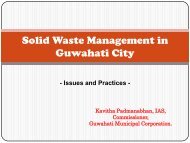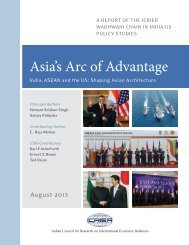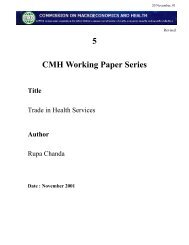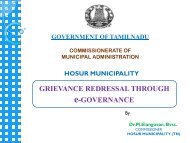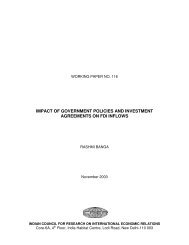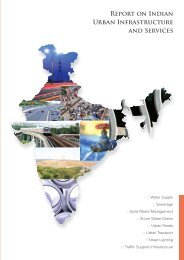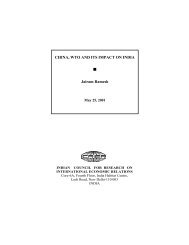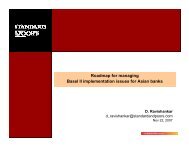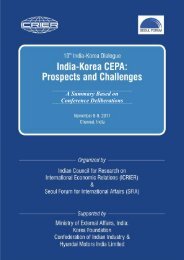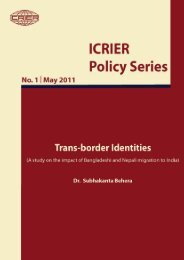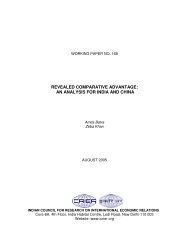Export Processing zones in India
Export Processing zones in India
Export Processing zones in India
Create successful ePaper yourself
Turn your PDF publications into a flip-book with our unique Google optimized e-Paper software.
Figure 4: Growth rates of <strong>Export</strong>s per employee : 1966-2002<br />
120<br />
100<br />
Growth Rate <strong>in</strong> %<br />
80<br />
60<br />
40<br />
20<br />
0<br />
-20<br />
1966<br />
1968<br />
1970<br />
1972<br />
1974<br />
1976<br />
1978<br />
1980<br />
1982<br />
1984<br />
1986<br />
Source : M<strong>in</strong>istry of Commerce<br />
MAGR<br />
1988<br />
1990<br />
1992<br />
1994<br />
1996<br />
1998<br />
2000<br />
2002<br />
One obvious explanation for the decl<strong>in</strong>e <strong>in</strong> the growth rates of employment / exports per<br />
unit could be the low base effect. Initial growth rates had been higher due to very low base.<br />
However, a cont<strong>in</strong>uous decl<strong>in</strong>e/ stagnation <strong>in</strong> the growth rates may not be expla<strong>in</strong>ed entirely by<br />
the low base hypothesis especially when new EPZs were be<strong>in</strong>g set up. The possible explanation<br />
could therefore be a lack of competitiveness of our EPZs. Prior to 1990, USSR and other East<br />
European countries were the major dest<strong>in</strong>ation of EPZ exports (Table 7). Kandla was almost<br />
completely dependent on the USSR markets for exports. <strong>Export</strong>s to these countries were possible<br />
because of the protected export markets offered to the <strong>India</strong>n firms under the umbrella of<br />
bilateral trade arrangements (Kumar 1989). Market<br />
Table 7 : Direction of EPZ export (%)<br />
1981-<br />
82<br />
1985-<br />
86<br />
1991-<br />
92<br />
1995-96 1997-<br />
98<br />
USA .93 1.53 25.26 35.18 47.88<br />
UK 1.28 .65 9.76 5.97 9.34<br />
Germany .86 3.60 3.87<br />
UAE 9.8 3.09 2.48 4.18 3.47<br />
S<strong>in</strong>gapore 2.74 7.69 2.85<br />
Others:<br />
USSR<br />
87.99<br />
86.74<br />
94.53<br />
92.84<br />
58.89<br />
-<br />
43.41<br />
-<br />
32.60<br />
-<br />
Total 100.00 100.00 100.00 100.00 100.00<br />
Source : Kumar (1989), Kundra (2000)<br />
competitiveness was not a major consideration. Until the early 1980s, such exports <strong>in</strong>creased<br />
rapidly. By the late 1980s, the growth rate <strong>in</strong> exports to these countries started slow<strong>in</strong>g down.<br />
And after the collapse of the USSR, EPZ units had to compete <strong>in</strong> highly competitive markets of<br />
the USA and Europe where they could not susta<strong>in</strong> their performance due to lack of<br />
16



